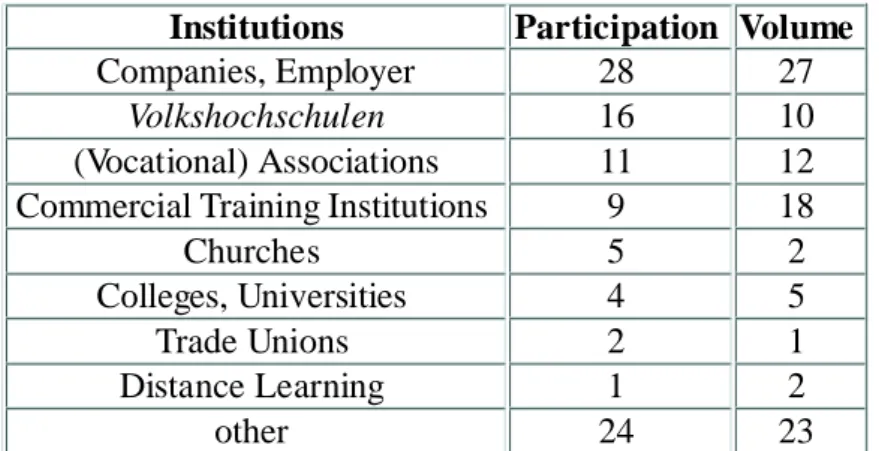Prof. Dr. Jost Reischmann is chair of andragogy at the University of Bamberg, Germany.
He is president of the International Society for Comparative Adult Education and member of the International Adult and
Continuing Education Hall of Fame
Adult Education in Germany:
Roots, Status, Mainstreams, Changes
Overview:
1. History and
Motives
2. The Influence of the
German Unification
3. Adult Education or
Education of Adults?
4. Participation: to a
Learning Society?
5. Institutions,
Finances
6. The State and
Legal Regulations
7. Theoretical
Mainstreams
8. The “Adult
Educator”
9. The Academic
Level
10. Changes
and Shifts
11. Some Open Fields 12. Comparative
Perspective 13. References
1. History and Motives
Historians of adult education claim different times and traditions as the beginning of adult education in Germany:
Tietgens (1994) claims the reading societies (Lesegesellschaften) in the second half of the 18th century as an important root of the adult education idea. Intellectual citizens met and exchanged about art, science, and politics. Libraries were established and journals were discussed. These intellectual circles which often included contributions of the leading
philosophers of that time are seen as the root of enlightenment in Germany.
This tradition of enlightenment and humanism is still a basic idea of adult education in Germany today.
Roehrig (1975) refers to the workers' educational societies
(Arbeiterbildungsvereine) in the first half of the 19th century. Here we find the motive that under-educated people meet and organize with the aim to overcome their intellectual poverty. The primary motive of workers for this development was emancipation through knowledge from being excluded from understanding the world and from being able to play a role on their own in this world. Later this motive changed more to emancipation through political action. Workers themselves often carried this movement, sometimes through philanthropic leaders and intellectuals.
Poeggeler (1992) points out the importance of the Catholic social movement founded in the first half of the 19th century by Adolph Kolping and its journeymen's association (Gesellenvereine) with their own houses for young workers not only for living, but also for further education in religion, vocation, and politics. Based on common religious values, learning and education took place in a social field, including work and leisure time activities, organized by the “Kolping-Family”.
Bergeest (1995), in his thorough regional-historical study of Hamburg,
noted different forms of vocational adult education in the 1700s: the


